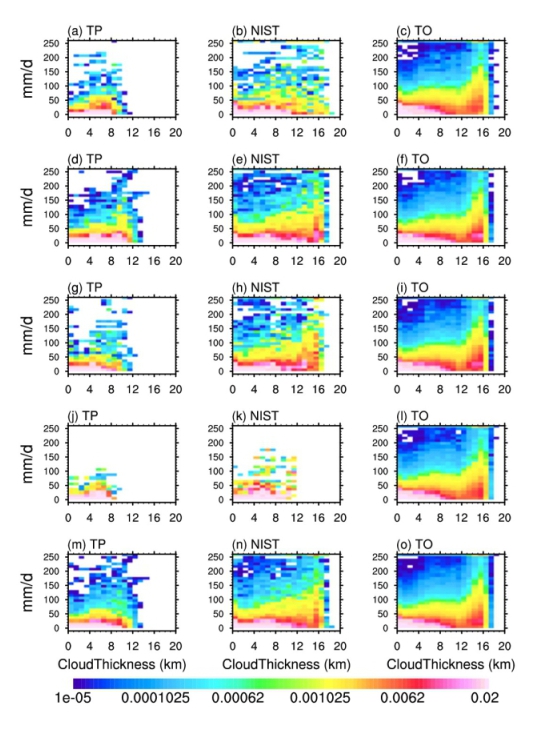As an intermediate link between water vapor evaporation and condensation, the effect of cloud on the water cycle is related to both cloud microphysical characteristics and cloud macroscopic characteristics. The transformation process between clouds and precipitation was found to have considerable effects on manipulating atmospheric heating profiles and generating plateau-scale uplifting force, which is a major forcing for establishing and maintaining the Tibetan Plateau (TP) monsoon circulation.
In a new study published in Atmospheric and Oceanic Science Letters, Dr. YAN Yafei (Shanghai Institute of Meteorological Science), Prof. LIU Yimin and Dr. WANG Xiaocong (Institute of Atmospheric Physics, Chinese Academy of Sciences) analyzed relationship between cloud vertical structures and precipitation over the TP and compared with its neighboring land (NIST) and tropical oceans (TO) based on CloudSat/CALIPSO satellite measurements and TRMM precipitation data.
The TP was found to have a compression effect on cloud systems, as manifested by a shrinking cloud depth (Figure 1) and lowering cloud top. Precipitation is weaker over the TP than its neighboring regions and exhibits large seasonal variations. In summer, cloud ice particles over the TP are mostly located at lower altitude (5–10 km), with a larger variability of sizes and aggregation (particle number concentration) under no-rain conditions compared to other regions. Ice water content becomes abundant and the number concentration tends to be dense at higher altitudes when precipitation is enhanced. However, even for heavy rainstorms, the aggregation is most likely between 100 and 250 L−1, whereas it can reach as high as 500 L−1 over its neighboring land and tropical oceans. Given the same magnitude of precipitation, the spectrum of ice particle sizes is found to be wider over the TP than other regions.

Figure 1. PDFs of precipitation intensity and total cloud thickness for (a–c) spring, (d–f) summer, (g–i) autumn, (j–l) winter, and (m–o) the annual mean.
Reference
Yan Y., X. Wang, and Y. Liu, 2017: Cloud vertical structures associated with precipitation magnitudes over the Tibetan Plateau and its neighboring regions, Atmospheric and Oceanic Science Letters, DOI:10.1080/16742834.2018.1395680.
Media Contact: Ms. LIN Zheng, jennylin@mail.iap.ac.cn
